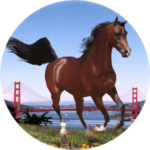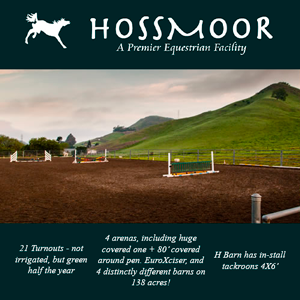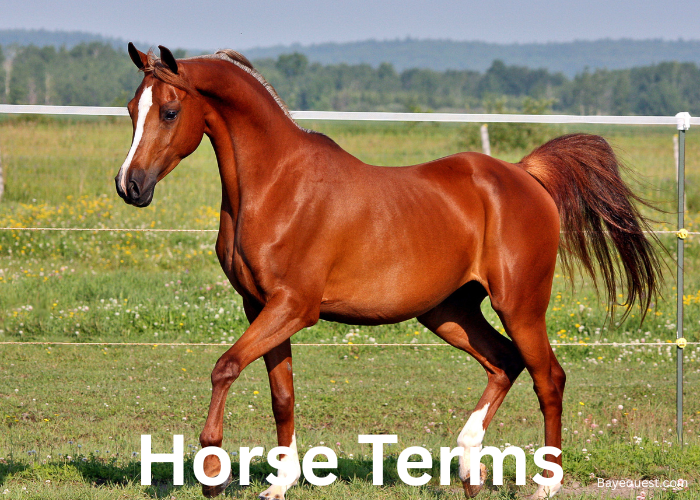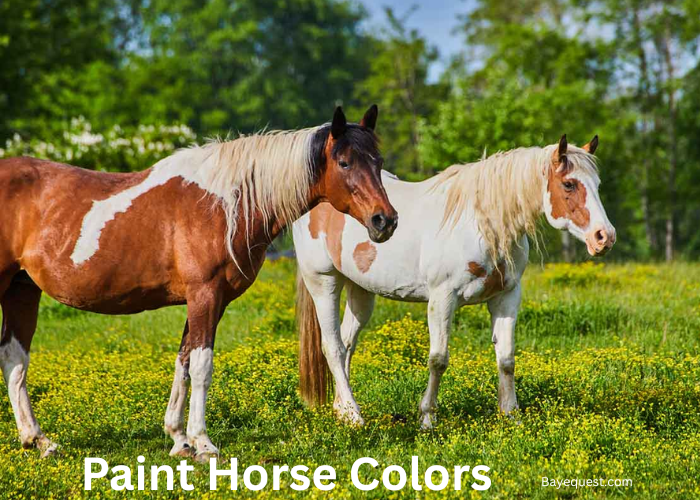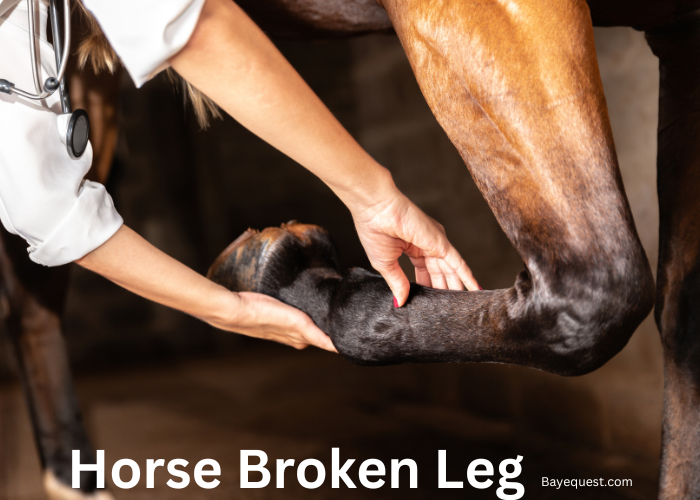Spend five minutes at a barn, and you’ll hear words that sound like a secret code.
What’s a fetlock? Why does everyone keep talking about leads and withers?
If you’ve ever felt lost in horse talk, you’re not alone. The good news? You don’t need to be a cowboy or a riding champ to get it.
In this guide, we’ll break down the real horse terms you’ll actually hear fast, simple, and no confusing jargon.
Saddle up. Let’s crack the code together.
Horse Terms: Key Takeaway
- Withers
- Hoof
- Fetlock
- Pastern
- Poll
- Barrel
- Foal
- Colt
- Filly
- Mare
- Stallion
- Gelding
- Balking
- Bolting
- Spooking
- Nipping
- Bucking
- Bay
- Chestnut
- Palomino
- Blaze
- Sock
- Saddle
- Bridle
- Reins
- Bit
- Stirrups
- Girth
- Curry comb
- Hoof pick
- Sweat scraper
- Forage
- Hay
- Pasture
- Concentrates
- Topline
- Croup
- Barrel
- Loin
- Hock
- Stifle
- Pasture
- Beet pulp
- Electrolytes
- Mane comb
- Fly spray
- Halter
- Lunge line
Basic Horse Anatomy Terms
Before you ride, groom, or even pet a horse, it helps to know the basics. Here are a few body parts you’ll hear about all the time:
Withers. The highest point of a horse’s shoulders, right between the neck and the back. It’s where you measure a horse’s height.
Hoof. The hard, tough part at the bottom of a horse’s leg. Like a big fingernail, but way stronger.
Fetlock. The joint just above the hoof. It bends like your ankle when the horse moves.
Pastern. The area between the fetlock and the hoof. It acts like a shock absorber for the leg.
Poll. The spot right behind the horse’s ears. It’s important for balance and control, especially when riding.
Barrel. The round, middle part of the horse’s body. It’s where you sit when you ride.
Muzzle. The soft, rounded part of the horse’s nose and mouth.
Croup. The top part of the horse’s rump, right before the tail starts.
Dock. The bony part at the top of the tail, hidden under the hair.
Flank. The side of the horse between the back legs and the belly.
Chest. The front part of the body between the shoulders. It gives power for movement.
Hock. The big, strong joint on a horse’s back legs. It bends like a human knee—but backwards.
Knee. The joint in the front legs, halfway down. (It’s like your wrist, not your actual knee.)
Stifle. The joint above the hock on the back leg. It’s like the horse’s real knee.
Shoulder. The large, sloped bone below the withers. Good shoulders make smoother movement.
Conformation. The overall structure, shape, and balance of a horse’s body. Good conformation helps a horse move better and stay sound.
Topline. The line along the horse’s back, from the withers to the croup. A strong, smooth topline shows good muscle development.
Back. The part between the withers and the loin. A short, strong back is better for carrying weight.
Loin. The area between the back and the croup. Strong loins help transfer power from the hindquarters.
Legs. The foundation of the horse. Straight, clean legs are key for strength, speed, and long-term soundness.
Pasterns. The sloping area between the fetlock and the hoof. Proper pastern angles help absorb shock.
Read more: Anatomy of the Horse.
Horse Age and Gender Terms
Horses are called different names depending on their age and gender. Here’s what you need to know:
Foal. A young horse, still nursing or recently weaned. It can be male or female.
Colt. A young male horse under the age of four.
Filly. A young female horse under the age of four.
Mare. An adult female horse, four years old or older.
Stallion. An adult male horse, four years old or older, that has not been castrated.
Gelding. A male horse that has been castrated. Geldings are often calmer and easier to handle than stallions. (See more on the differences between a stallion and a gelding here)
Weanling. A foal that has been weaned off its mother’s milk, usually between 6 months to a year old.
Yearling. A horse between one and two years old. Still young but more independent.
Broodmare. A mare that is used for breeding.
Stud. A stallion that is used for breeding.
Sire. The father of a horse.
Dam. The mother of a horse.
Ridgling (or Rig). A male horse with one or both testicles undescended (also called a cryptorchid).
Common Horse Behavior Terms
Horses have their own ways of showing fear, excitement, or frustration. Here are a few behavior terms you’ll hear often:
Balking. When a horse refuses to move forward. It might plant its feet or back up instead.
Bolting. When a horse suddenly runs off, often out of fear or excitement. Hard to stop once it starts.
Spooking. A quick, scared reaction to something unexpected, like a sudden noise or movement. Often involves jumping to the side or running away.
Nipping. When a horse tries to pinch you lightly with its teeth. It can be playful, or a warning.
Kicking. When a horse lashes out with its hind legs. It’s a strong warning to stay back.
Rearing. When a horse stands up on its hind legs. It can be playful, fearful, or a sign of resistance.
Bucking. When a horse kicks up its back legs, usually to get rid of something uncomfortable, like a rider, a saddle, or even flies.
Crow-hopping. Small, repeated bucks where the horse’s hind legs come off the ground but not very high. It’s like a mild form of bucking.
Pawing. Scraping the ground with a front hoof. It can mean impatience, boredom, frustration, or even pain.
Chewing the bit. When a horse plays with the bit in its mouth. It might be relaxing or showing nervousness.
Snorting. A short, loud breath through the nose. Often, a sign that the horse is alert or checking out something new.
Pinning ears. When a horse lays its ears flat back against its head. A clear sign of anger or irritation.
Head tossing. Throwing the head up and down. It can mean frustration, discomfort, or just playfulness.
Grinding teeth. A horse grinding its teeth together. Often a sign of pain, stress, or unhappiness.
Tail swishing. A fast, sharp swish of the tail. It can mean irritation, especially with flies, or it can signal that the horse is annoyed.
Stretching. A horse might stretch its neck and legs after standing for a while. It’s usually harmless, like a good human stretch.
Horse Colors and Markings Terms
Horses come in a rainbow of colors and patterns. Here are the most common terms you’ll hear:
Bay. A reddish-brown body with a black mane, tail, and lower legs.
Chestnut. A rich, reddish-brown color all over. Mane and tail usually match the body.
Palomino. A golden body with a white or cream-colored mane and tail. Looks like a horse made of sunshine.
Black. Solid black all over, including the mane and tail. True black horses are rare.
Gray. Born dark and get lighter with age. A gray horse might turn almost pure white later in life.
Roan. A mix of white and colored hairs all over the body. The head and legs usually stay darker.
Pinto. Big patches of white mixed with another color, like black, bay, or chestnut.
Buckskin. A tan or gold body with black points, meaning black mane, tail, and lower legs.
Dun. A sandy or yellow body with darker points and a dark stripe down the back (called a dorsal stripe).
Blaze. This is a wide white stripe running down the center of the face.
Star. A small white spot on the horse’s forehead.
Snip. A white mark on the nose or between the nostrils.
Stripe. Narrow white line down the face, thinner than a blaze.
Sock. A white marking that covers the horse’s leg up to the ankle.
Stocking. A white marking that goes higher up the leg, usually to the knee or hock.
Horse Riding and Training Terms
Learning to ride means learning a new language, too. Here are some common riding and training terms you’ll hear:
Gait. How a horse moves. The basic gaits are walk, trot, canter, and gallop.
Walk. A slow, steady four-beat gait. The horse moves one foot at a time.
Trot. A faster, two-beat gait where diagonal legs move together. It feels bouncy to new riders.
Canter. A smooth, three-beat gait that’s faster than a trot but slower than a gallop.
Gallop. The fastest gait, like a full sprint. It’s powerful and thrilling, but harder to control.
Lead. Refers to which front leg is reaching farther when cantering. Horses usually lead with the leg on the inside of a turn.
Posting. When riders rise and sit in rhythm with the horse’s trot. It makes the ride smoother and more comfortable.
Collection. A horse carrying more weight on its back legs, moving in a controlled and balanced way. It feels lighter and more flexible under the rider.
Half-halt. A subtle move where the rider briefly asks the horse to slow down or rebalance without fully stopping.
Flying change. When a horse switches leads mid-air while cantering, without breaking stride. Often seen in advanced riding and shows.
Horse Equipment Terms
When people talk about horse gear, they usually call it “tack.” Here are the basic horse equipment every rider should know:
Bridle. The headgear a horse wears to help the rider steer and control it. It holds the bit and reins.
Bit. A metal piece that goes into the horse’s mouth. It connects to the reins and helps the rider give directions.
Reins. The long straps the rider holds to guide the horse. They attach to the bit or bridle.
Saddle. The seat placed on the horse’s back. It gives the rider balance and comfort while riding.
Stirrups. The small metal loops that hang from the saddle. Riders put their feet in them for support and stability.
Girth. The strap that goes under the horse’s belly to keep the saddle securely in place.
Saddle pad. A soft pad placed under the saddle to protect the horse’s back and absorb sweat.
Breastplate. Straps that go across the horse’s chest to keep the saddle from sliding backward.
Martingale. A strap system that helps keep a horse from tossing its head too high.
Halter. A headpiece used for leading and tying a horse. Unlike a bridle, it has no bit.
Lead rope. A rope attached to the halter. Used to guide the horse by hand.
Lunge line. A long rope used to exercise a horse in circles around the handler.
Cinch. The Western version of a girth. It secures the saddle on a horse’s belly.
Crupper. A strap that goes under a horse’s tail to keep the saddle from sliding forward, often used on steep terrain.
Hackamore. A type of bridle without a bit. It controls the horse using pressure on the nose and chin.
Breastcollar. Another term for breastplate, especially common in Western riding.
Splint boots / Leg wraps. Protective gear worn on the horse’s legs during riding or training to prevent injury.
Bell boots. Round boots that protect the horse’s hooves and prevent them from overreaching (striking a front foot with a back foot).
Surcingle. A padded strap that wraps around the horse’s girth area, often used in training without a saddle.
Horse Measurements Terms
When it comes to horses, size matters and so does knowing the right terms. Here are the basics:
Hand. The standard unit for measuring a horse’s height. One hand equals 4 inches. Horses are measured from the ground to the top of the withers.
Height. Described in hands and inches. For example, a horse that’s 15.2 hands is 15 hands plus 2 inches tall.
Weight. Usually measured in pounds or kilograms. Weight is important for feeding, riding, and health care.
Girth measurement. The distance around the horse’s barrel, just behind the front legs. Used to estimate weight or fit saddles and blankets.
Body Condition Score (BCS). A number between 1 and 9 that shows how fat or thin a horse is. 1 means extremely thin; 9 means extremely overweight. A healthy horse usually scores around 5.
Height tape. A special tape used to measure a horse’s height or estimate its weight.
Weight tape. A measuring tape designed to estimate a horse’s weight based on its girth.
Cannon Bone Circumference. The measurement around the cannon bone (the lower part of the leg). Important for racehorses and sport horses—it shows bone strength.
Topline. The length and muscling along the horse’s back, from the withers to the croup. A strong topline means better movement and carrying ability.
Heart girth. A measurement taken around the horse’s chest, just behind the elbows. Often used for a more accurate weight estimate.
Length. Measured from the point of the shoulder to the point of the buttock. Important for fitting rugs, blankets, and sometimes estimating weight.
Neck circumference. Measured around the middle of the neck. Useful for fitting certain types of tack and for monitoring fat deposits.
Chest width. The distance across the chest from one shoulder to the other. Important for saddle fitting and judging conformation.
Horse Grooming Terms
Curry comb. A rubber or plastic brush used in circular motions to loosen dirt, hair, and mud.
Body brush. A soft- or medium-bristled brush used to sweep away dust and bring out the horse’s shine.
Dandy brush. A stiff-bristled brush used to remove heavy dirt and dried mud from the horse’s body.
Mane comb. A small comb used to untangle and neaten the horse’s mane.
Tail brush. A brush made specifically to gently untangle a horse’s tail without pulling out too much hair.
Hoof pick. A tool used to clean mud, manure, and rocks from the bottom of a horse’s hooves.
Sweat scraper. A curved rubber or plastic tool used to remove excess water after bathing a horse.
Shedding blade. A looped metal tool used to pull loose, shedding hair from a horse’s coat.
Grooming mitt. A glove with rubber or soft nubs that helps massage and clean the horse’s body.
Face brush. A small, very soft brush used on the horse’s sensitive face areas.
Clippers. Electric or battery-powered tools used to trim hair on the horse’s body, face, legs, or bridle path.
Detangler spray. A spray that softens and loosens hair in the mane and tail, making it easier to brush.
Hoof oil. A conditioning product applied to the hooves to keep them moisturized and healthy.
Fly spray. A mist sprayed onto the horse’s coat to repel flies and biting insects during grooming or turnout.
Mane pulling comb. A special comb used to pull and thin a thick mane for easier braiding or neatening.
Towel. Used to wipe down the horse after a bath or to bring out extra shine during grooming.
Horse Nutrition Terms
Forage. Grass, hay, or haylage that makes up the main part of a horse’s diet.
Hay. Dried grass or legumes like alfalfa, used as a primary food source.
Pasture. Fresh grass that horses graze on when turned out.
Concentrates. Grain or pellet feeds that are more calorie-dense than forage. Includes oats, corn, and commercial feed mixes.
Grain. Cereal grains like oats, corn, and barley, fed to horses for extra energy.
Alfalfa. A legume hay high in protein and calcium. Often fed to young, working, or underweight horses.
Chaff. Chopped hay or straw often mixed with feed to slow eating or add fiber.
Beet pulp. A fiber-rich feed made from sugar beets, soaked before feeding. Good for adding calories and fiber.
Bran mash. A warm, soft meal made from wheat bran. Traditionally given as a treat, though not a daily diet staple.
Supplements. Extra vitamins, minerals, or nutrients added to a horse’s diet to meet specific needs.
Electrolytes. Mineral salts like sodium, potassium, and chloride given to replace what horses lose through sweat.
Balancers. Concentrated supplements that provide vitamins and minerals without a lot of extra calories.
Fiber. The part of the diet that keeps the digestive system moving properly. Comes mainly from forage.
Protein. Important for muscle building and repair. Young horses, pregnant mares, and performance horses often need more protein.
Fat. An extra energy source sometimes added to a horse’s diet to help with weight gain or stamina.
Roughage. Another term for forage—meaning hay, grass, or anything fibrous that the horse can chew and digest slowly.
Digestible Energy (DE). The amount of energy from feed that a horse can actually absorb and use.
Crude protein. The total protein content listed on feed labels, measured as a percentage.
NSC (Non-Structural Carbohydrates). Sugars and starches found in horse feed. Important to monitor for horses prone to laminitis or metabolic issues.
Laminitis. A painful hoof condition often triggered by a poor diet high in sugars or sudden changes in feed.
Horse Terms: Conclusion
Learning horse terms makes everything easier, whether you’re riding, grooming, or just hanging out at the barn.
It helps you understand what your horse needs and how to care for them better. It also makes talking to trainers, vets, and other riders feel less confusing.
The more terms you know, the more confident you’ll feel around horses. Don’t worry about memorizing everything at once.
Start small and build from there. Every word you learn brings you one step closer to becoming a true horse person.
